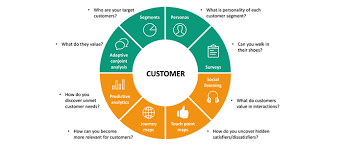Klaviyo Automation Flows: Boosting Sales and Customer Engagement
April 24, 2025
Ron

Klaviyo automation email flows have revolutionized the way businesses interact with their customers. In today’s highly competitive e-commerce landscape, staying connected with your audience and providing a personalized experience is essential. Klaviyo, a popular email marketing platform, offers a wide range of automation flows designed to enhance customer engagement, increase sales, and build brand loyalty.
Klaviyo Automation Flows
Klaviyo is a powerful marketing automation tool that allows businesses to create, manage, and analyze email and SMS marketing campaigns. Automation flows are pre-built, time-based, and behavior-triggered sequences of emails and SMS messages designed to nurture leads and turn them into loyal customers. These flows can be tailored to the specific needs of your business, making it easier to target the right audience with the right message at the right time.
Benefits of Using Klaviyo Automation Flows
- Efficiency: Klaviyo automation flows work tirelessly in the background, allowing you to focus on other aspects of your business.
- Personalization: Send highly personalized messages to your audience based on their behavior and preferences.
- Increased Sales: Automation flows help recover abandoned carts, promote products, and re-engage with past customers.
- Data-Driven Insights: Klaviyo provides valuable data and analytics to improve your marketing strategy.
- Time and Cost Savings: Automating your marketing efforts saves time and reduces overhead costs.
Understanding the Different Types of Automation Flows
Welcome Series
The Welcome Series is designed to greet new subscribers and introduce them to your brand. It typically includes a series of emails that provide information about your products, values, and incentives to make their first purchase.
Abandoned Cart Series
When a potential customer abandons their shopping cart, the Abandoned Cart Series sends reminder emails to recover the sale. These emails often include product recommendations and special offers.
Post-Purchase Series
After a customer makes a purchase, the Post-Purchase Series is triggered. It focuses on enhancing the customer’s experience, asking for reviews, and suggesting complementary products.
Product Recommendations
Product Recommendation flows use data to suggest products to customers based on their past behavior and preferences. This new flow that is a powerful tool for increasing upsells and cross-sells.
Win-Back Series
The Win-Back Series targets inactive customers and aims to re-engage them with your brand. It often includes exclusive offers to entice customers back in stock again.
Setting Up Klaviyo Automation Flows
To get started with Klaviyo automation flows, follow these steps:
Creating a Klaviyo Account
- Sign up for a Klaviyo account.
- Verify your email and set up your business profile.
Navigating the Dashboard
Familiarize yourself with the Klaviyo dashboard, where you can access all the tools and features needed to set up your automation flows.
Adding Subscribers
Import your subscriber list or integrate Klaviyo with your e-commerce platform to automatically sync your contacts.
Building a Welcome Series
A compelling Welcome Series is crucial for making a positive first impression. Craft a friendly, informative email that introduces your brand and encourages subscribers to explore your products.
Optimizing Abandoned Cart Series
The Abandoned Cart Series is a critical revenue-recovery tool. Personalize your abandoned cart emails, include images of the abandoned products, and offer discounts to entice customers to complete their purchase.
Enhancing Post-Purchase Series
This series is an opportunity to maximize the value of each customer. Cross-sell related products, ask for reviews, and provide excellent customer support to ensure repeat business.
Implementing Product Recommendations
Leverage the power of data to recommend products that your existing customers are likely to be interested in. This can significantly boost your sales and customer satisfaction.
Re-Engaging with Win-Back Series
Winning back inactive customers is a cost-effective strategy. Send enticing offers and remind them why they loved your brand in the first place.
Measuring and Analyzing the Effectiveness of Automation Flows
Use Klaviyo’s analytics tools to track the performance of your automation flows. Monitor open rates, click-through rates, and conversion rates to make data-driven improvements.
Tips for Improving Your Klaviyo Automation Flows
- Continuously test and optimize your emails.
- A/B testing can help you determine the most effective subject lines and content.
- Segment your audience for more targeted messages.
Examples of Successful Brands Using Klaviyo Automation Flows
Brands like “EcoTrends” and “TechGear” have seen tremendous success with Klaviyo automation flows. Their carefully crafted Welcome Series, Abandoned Cart Series, and Product Recommendations have resulted in increased sales and customer retention.
Common Mistakes to Avoid in Automation Flows
- Sending too many emails in a short period.
- Not personalizing emails to match customer preferences.
- Neglecting to analyze and improve your automation flows.
Integrating Klaviyo with E-Commerce Platforms
Klaviyo seamlessly integrates with popular e-commerce platforms like Shopify, WooCommerce, and BigCommerce, making it easy to sync customer data and automate your marketing.
Integration of Trigger and Flow Filters
Synergy for Enhanced Data Management
The synergy between triggers and flow filters creates a comprehensive data management ecosystem. Triggers initiate processes based on specific events, and flow filters ensure that the resulting data flows are controlled, refined, and aligned with predefined criteria.
Scalability and Adaptability
This integrated approach enhances the scalability and adaptability of data management systems. As the volume and complexity of data increase, triggers and flow filters can be adjusted and expanded to accommodate evolving requirements.
Understanding Customer Service Inquiries
1. Definition and Types
Customer service inquiries encompass a broad range of requests, questions, and concerns from customers. These can include product inquiries, support requests, billing questions, and feedback. Understanding the various types is essential for tailoring responses appropriately.
2. Channels of Communication
Inquiries can arrive through various channels, including email, phone calls, live chat, and social media. A multi-channel approach ensures that businesses are accessible to customers on their preferred platforms, enhancing the overall customer experience.
Best Practices for Handling Inquiries
1. Timely Responses
Timeliness is crucial in customer service. Responding promptly to inquiries demonstrates commitment and care. Implementing automated acknowledgements can reassure customers that their queries are in the queue for attention.
2. Personalised Communication
Personalisation adds a human touch to customer interactions. Addressing customers by name and referencing their specific inquiries fosters a sense of individual attention, contributing to positive customer experiences.
3. Active Listening
Understanding the customer’s perspective is key. Practising active listening during inquiries ensures that customer service representatives grasp the nuances of the issue and can provide accurate and relevant solutions.
4. Clear and Concise Communication
Clarity is paramount in customer service inquiries. Responses should be clear, concise, and free of jargon, ensuring that customers easily comprehend the information provided.
Proactive Engagement Strategies

1. Anticipating Needs
Proactive engagement involves anticipating customer needs before they arise. Utilising data analytics and customer feedback helps businesses identify common issues and address them proactively.
2. Providing Resources
Empowering customers with self-service resources, for example, such as FAQs, video tutorials, and knowledge base articles, allows them to find answers independently. This not only enhances customer satisfaction but also reduces the volume of inquiries.
3. Post-Purchase Follow-ups
After a purchase, following up with customers to gather feedback and address any post-purchase concerns demonstrates a commitment to their satisfaction. It also provides valuable insights for continuous improvement.
Flow Builder in Business
In the dynamic landscape of business operations, the integration of efficient tools is crucial for enhancing productivity and maintaining a competitive edge.
Defining Flow Builders

1. Concept and Purpose
A flow builder is a tool or platform designed to create and automate workflows within an organisation. It allows users, often without extensive coding knowledge, to visually design the sequence of tasks, actions, and decisions that make up a business process. The primary purpose is to streamline operations, reduce manual intervention, and ensure consistency in task execution.
2. Visual Interface
One of the key features of flow builders is their visual interface. Users can drag and drop elements, such as tasks, conditions, and triggers, onto a canvas, creating a visual representation of the workflow. This intuitive approach enables users across various departments to participate in building and modifying workflows.
Significance of Flow Builders in Business
1. Automation and Efficiency
Automation lies at the core of flow builders. By automating repetitive tasks and standardising processes, businesses can significantly enhance efficiency and create flow. This not only saves time but also reduces the risk of errors associated with manual interventions.
2. Cross-Departmental Collaboration
Flow builders facilitate collaboration among different departments within an organisation. Teams can contribute to the design and improvement of workflows, fostering a culture of shared responsibility and ensuring that workflows align with the needs of each department.
3. Adaptability and Scalability
Business environments are dynamic, and workflows need to adapt to changing requirements. Flow builders offer the flexibility to modify workflows easily, accommodating evolving business processes. Additionally, they scale seamlessly as the organisation grows, supporting increased workflow complexity.
Common Use Cases for Flow Builders
1. Approval Workflows
Flow builders are commonly used to automate approval processes. From expense approvals to document reviews, these tools enable the creation of customised workflows that route tasks to the relevant stakeholders, ensuring a streamlined and auditable approval chain.
2. Customer Onboarding
In industries like finance and technology, where customer onboarding involves multiple steps and approvals, flow builders simplify the process. They orchestrate tasks like account setup, documentation review, and compliance checks, ensuring a smooth onboarding experience for customers.
Choosing the Right Flow Builder
1. Integration Capabilities
An effective flow builder should seamlessly integrate with existing systems and applications. This ensures a cohesive and interconnected ecosystem, allowing data to flow effortlessly between different parts of the business.
2. User-Friendly Interface
The ease of use is a critical factor when selecting a flow builder. A user-friendly interface empowers teams across departments to actively participate in the design and modification of workflows, reducing dependence on specialised technical skills.
3. Analytics and Monitoring Features
Visibility into the performance of workflows is essential. A robust flow builder includes analytics and monitoring features that provide insights into how workflows are functioning. This allows businesses to identify bottlenecks, track efficiency, and make data-driven improvements.
The Entire Flow of Optimising Business Operations
In the intricate dance of modern business operations, mastering the entire flow of time delay, is imperative for sustained success.
Mastering Efficiency: The Entire Flow of Optimiszing Business Operations
In the intricate dance of modern business operations, mastering the entire flow is imperative for sustained success. This comprehensive guide delves into the holistic approach of optimising business operations, covering key aspects from initial strategies and workflow design to the integration of advanced tools like automated flow builders.
Strategic Planning: Laying the Foundation

Understanding Business Goals and Objectives
The customer journey always begins with a deep understanding of business goals and objectives. Every operational decision should align with these overarching goals, ensuring a unified and purposeful approach.
Market Analysis and Competitor Benchmarking
Thorough market analysis and competitor benchmarking provide crucial insights. By understanding market trends and competitors’ strategies, businesses can identify opportunities, mitigate risks, and position themselves strategically.
Workflow Design: Crafting Seamless Processes
Mapping Workflows and Identifying Pain Points
Efficient operations hinge on well-designed workflows. Mapping out processes helps identify pain points and inefficiencies, setting the stage for targeted improvements. It’s essential to involve key stakeholders in this collaborative process.
Integration of Automation and Technology
The integration of automation and technology plays a pivotal role in workflow design. Tools like workflow management systems and automation software enhance efficiency by streamlining tasks, reducing manual errors, and ensuring consistency.
Human Resource Alignment: Empowering Teams
Aligning Teams with Organisational Goals
Empowering teams involves aligning them with organisational goals. Clear communication and a shared vision foster a sense of purpose, motivating employees to contribute actively to the success of the business.
Investing in Training and Skill Development
Investing in training and skill development ensures that teams are equipped to handle evolving challenges. This proactive approach enhances adaptability and prepares employees for the dynamic nature of modern business.
Utilising Data Analytics: Informed Decision-Making
Implementing Robust Data Analytics
Data analytics forms the backbone of informed decision-making. Implementing robust analytics tools allows businesses to gain actionable insights, make data-driven decisions, and identify areas for improvement within their operations.
Continuous Monitoring and Analysis
Continuous monitoring and analysis of key performance indicators (KPIs) are essential. This ongoing evaluation ensures that businesses stay responsive to changing circumstances and can proactively address emerging challenges.
Integrating Advanced Tools: The Role of Flow Builders
Introduction to Flow Builders
Flow builders represent a paradigm shift in business operations. These tools allow for the visual creation and automation of workflows, empowering users to streamline processes without extensive coding knowledge. They contribute to increased efficiency and agility.
Leveraging Flow Builders for Workflow Automation
The integration of flow builders email workflows into business operations offers unparalleled benefits. These tools automate repetitive tasks, enhance cross-departmental collaboration, and provide adaptability, ensuring that workflows align with evolving business needs.
Customer-Centric Focus: Enhancing Experiences
Understanding Customer Needs
A customer-centric approach is foundational for business success. Understanding customer needs, preferences, and pain points allows businesses to tailor their operations to enhance customer experiences.
Crafting an Effective Email Marketing Strategy
In the ever-evolving landscape of digital marketing, a well-crafted email marketing strategy remains a cornerstone for businesses seeking to connect with their audience.
Klaviyo automation flows are a game-changer for businesses looking to boost sales and customer engagement. With the right strategy, you can create highly personalized, automated sequences of emails and SMS messages that nurture leads, recover abandoned carts, and turn one-time buyers into loyal customers.
Don’t miss out on the opportunity to supercharge your marketing efforts. Give Klaviyo automation flows a try and watch your e-commerce business thrive.
FAQs
1. What is Klaviyo?
Klaviyo is a powerful marketing automation platform that with sophisticated data functionality helps businesses create and manage email and SMS marketing campaigns.
2. What are automation flows?
Automation flows are pre-built sequences of emails and SMS messages that are designed to automate marketing efforts and engage with customers based on their behavior.
3. How can Klaviyo automation flows benefit my business?
Klaviyo automation flows can increase efficiency, personalize customer interactions, boost sales, and provide valuable data-driven insights.
4. What are some common mistakes to avoid when using automation flows? Common email flow mistakes include sending too many emails, lack of personalization, and failing to analyze and improve automation flows.
5. Which e-commerce platforms can integrate with Klaviyo?
Klaviyo seamlessly integrates with popular e-commerce platforms such as Shopify, WooCommerce, and BigCommerce.
What it’s Like to work with Underground Ecom?

$1.9M
EMAIL MARKETING REVENUE
287%
Increase in
Revenue

37% OF REVENUE THROUGH EMAIL MARKETING

$1.9M
EMAIL MARKETING REVENUE
287%
Increase in
Revenue

37% OF REVENUE THROUGH EMAIL MARKETING